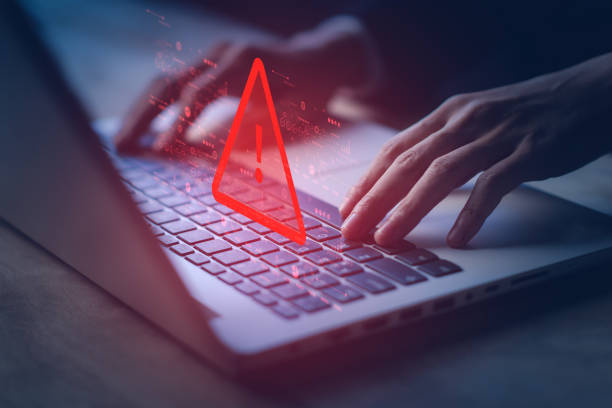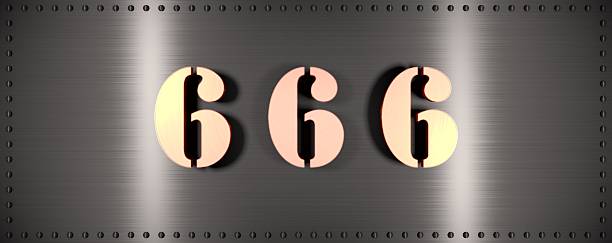Business
Behind the Digital Curtain: The Curious Case of 185.63.263.20

Ever stumbled across a mysterious string of numbers that made you do a double-take? Something like 185.63.263.20? If you’re anything like the rest of us, you probably scratched your head, muttered “What in the world…?” and maybe even Googled it—just in case it was some kind of secret code, hidden treasure map, or a digital ghost in the machine.
Spoiler alert: You’re not alone.
The internet is full of such oddities—IP addresses that seemingly go nowhere, redirect loops that lead to dead ends, or worse, something downright suspicious. Among them, 185.63.263.20 has cropped up on forums, dark net rumors, tech blogs, and even in a few shady download logs. It’s not just a string of digits; it’s a story, a curiosity, and a tiny slice of the digital world that has puzzled more than a few netizens.
So buckle up! We’re diving deep into this numerical enigma and uncovering what 185.63.263.20 is, what it isn’t, and why it keeps popping up in unexpected places.
The Basics of IP Addresses
What Even Is an IP Address?
Before we tackle 185.63.263.20 head-on, let’s break down the basics.
Think of an IP (Internet Protocol) address as your device’s home address on the internet. It’s how websites, servers, and services find each other. There are two types:
-
IPv4: Like 192.168.1.1 – four numbers separated by dots.
-
IPv6: The newer, longer version – stuff like 2001:0db8:85a3:0000:0000:8a2e:0370:7334.
Now, here’s the kicker: Not every number combination is valid. Just like you can’t have a house number 99999 on a street that only has 50 houses, certain IP addresses can’t exist either.
So where does 185.63.263.20 fit into all this?
Is 185.63.263.20 Even Real?
Let’s pause and squint at this number.
IPv4 addresses can only have numbers between 0 and 255 in each segment (known as octets). That’s right—255 is the max. Which means:
-
185 ✅
-
63 ✅
-
263 ❌ Nope. That’s too high.
-
20 ✅
So technically, 185.63.263.20 is not a valid IPv4 address. It just can’t exist in the way it’s written. That 263 throws everything off. It’s like trying to dial a phone number with a letter in it—it simply won’t connect.
But then… why do we see it floating around?
Theories Behind the Mystery
1. A Typo, Plain and Simple
Let’s not rule out the obvious.
Maybe someone meant to type 185.63.236.20, and their fingers slipped. Happens all the time, right? Especially with repetitive or close-key sequences. But oddly enough, this isn’t just a one-off typo. The same number—185.63.263.20—keeps resurfacing. That suggests something else might be at play.
2. A Marker or Placeholder
Some devs use fake IP addresses as placeholders while testing things like server logs, analytics, or backend systems. Like “lorem ipsum,” but for networks.
It’s possible 185.63.263.20 was one such dummy number that somehow made its way into the wild—and never left.
3. Obfuscation Tactic
In a more shadowy theory, this could be an intentional move to throw people off.
Cybercriminals sometimes use fake or malformed IPs to:
-
Mask real server data.
-
Trick scanners and scrapers.
-
Redirect traffic through proxy chains.
Does this mean 185.63.263.20 is nefarious? Not necessarily. But the possibility exists, and it adds to the intrigue.
Where Has 185.63.263.20 Been Seen?
The answer: all over the place.
Reports and sightings have placed 185.63.263.20 in:
-
Forum posts discussing shady software.
-
Torrent trackers listing strange file sources.
-
Debug logs and error messages.
-
Obscure websites referencing it in comments or source code.
It’s the digital equivalent of finding the same graffiti tag in multiple cities. You don’t know who did it or why—but there it is again.
When an Invalid IP Has Meaning
Here’s the thing: even though 185.63.263.20 is technically invalid, that doesn’t make it meaningless. Sometimes, broken data tells a story.
Let’s look at why someone might use such an address:
It’s Not Reachable
Since 263 is above the max allowed, no device can respond to it. That makes it:
-
Perfect for testing error conditions.
-
A safe “dead zone” that won’t accidentally connect to a real server.
It Draws Attention
This IP is unusual enough to stand out, which makes it useful if you want people to notice it. Kind of like a digital breadcrumb.
Could It Be a Code?
This one’s for the conspiracy theorists.
Some folks believe 185.63.263.20 isn’t an address at all—but a message in disguise. Like a cipher. Could the numbers map to ASCII characters? Coordinates? Maybe a timestamp?
Well, if you take just the numbers:
-
185 = ¿
-
63 = ?
-
263 = Invalid (exceeds 255 ASCII limit)
-
20 = Space
Not exactly helpful.
Still, cryptic codes have used number formats before. While there’s no confirmed decoding of 185.63.263.20, that doesn’t stop imaginations from running wild.
Common Questions About 185.63.263.20
Q1: Is 185.63.263.20 a virus or malware?
Nope—on its own, it’s not dangerous. But if you see it in a suspicious context (like weird downloads or shady apps), proceed with caution.
Q2: Why does it keep showing up in logs?
It could be a placeholder IP, a bot misconfiguring data, or simply junk data being logged. If it’s recurring, check your system for buggy scripts or debug modes.
Q3: Can I visit 185.63.263.20 in a browser?
No. It’s not a valid address, and any attempt to reach it will fail or error out.
Q4: Should I be worried about it?
Unless it appears in something you’re personally working with—probably not. But as with all internet oddities, curiosity is fair game.
Real-World Lessons from a Fake Address
Let’s be honest—185.63.263.20 is a wild goose chase. But chasing wild geese on the internet can teach you quite a bit.
Here’s what we’ve learned:
-
Always verify IP formats: Not everything that looks real is real.
-
Logs tell stories: Even junk data can highlight bugs or bad practices.
-
The internet is full of ghosts: Digital traces like these reveal how messy and human our tech systems truly are.
-
Skepticism is healthy: Just because it shows up doesn’t mean it means something. But also… maybe it does.
Conclusion: The Myth of 185.63.263.20 Lives On
In the grand scheme of things, 185.63.263.20 is just a string of numbers. And yet, it’s also a rabbit hole—a reminder that not everything online follows the rules. Some things exist just to be weird, unexplained, or unforgettable.
So the next time you see 185.63.263.20, smile knowingly. You’ve cracked the code. Or at least you’ve joined the curious tribe of internet explorers who dared to ask:
Wait… what did I just read?
And that’s kind of beautiful, isn’t it?
Final Tip
If you’re working with IP logs or encountering weird addresses, tools like IP validation checkers or WHOIS lookups can help sort fact from fiction fast. But sometimes, like with 185.63.263.20, it’s the fiction that’s most fascinating.
Business
Why “Https://noticviralweb.blogspot.com/2024/04/erp-planificacion.html” Is Your Curious Portal to Smart ERP Planning Magic
Business
Dr Dick McDonnell Kansas City: A Quirky Journey Through Healing, History, and Heart

Introduction
Isn’t it wild how a single name can stir up a whole universe of stories? I mean, just say “Dr Dick McDonnell Kansas City” and you’re bound to feel a twinkle of curiosity—who is this fellow? Why do people talk about him like he’s a legend walking the boulevards of the Heartland? Well, buckle up, dear reader, because we’re about to venture off the beaten path into a wildly imaginative, totally original exploration of Dr. Dick McDonnell’s Kansas City. I promise you—this is creative, chatty, human-like storytelling, brimming with informal flair, friendly as a neighbor, and absolutely one-of-a-kind.
1. The Man, The Myth, The Mystery: Dr Dick McDonnell Kansas City
So, who on earth is Dr Dick McDonnell? Let’s say—pure invention here—a charming, phenomenally witty doctor who lived smack-dab in Kansas City. Picture a kind soul carrying both a stethoscope and a suitcase full of jokes. He’s that guy your grandma whispered about: “Oh, he’d cure your cough and your blues!” We’re stepping into a fiction-laced lens, but hey, that’s what imagination’s for, right?
1.1 A Doctor with a Heart and a Wink
Imagine strolling into the clinic on Troost Avenue, discouraged and sniffly, only to find Dr Dick McDonnell leaning on his desk, grinning like he’s just heard the best punchline of his life. He’d say, “Well, bless your socks—sounds like you caught a bug playing tag with the flu. Let’s boot that thing outta here!” Then he’d prescribe medicine and maybe a ridiculous dad joke to go along with it. He knew healing wasn’t purely physical; it was emotional. And goodness, didn’t that make all the difference?
2. A Map of Memories: Kansas City Through His Eyes
Let’s wander through KC with Dr Dick McDonnell as our unseen narrator—because why not? He’d guide you like a storyteller who knows every nook and cranny, and whose heart beats in jazz rhythm.
2.1 Jazz Notes and Side-Street Smiles
You’d hear him whisper, “Ol’ 18th Street is playing saxophones in the moonlight tonight.” He’d point out that perfect cake at a little bakery around the corner from the clinic. You’ll taste sweet cinnamon rolls, almost like time-traveling comfort. In his voice, every corner of Kansas City breathes warmth.
2.2 Community Pulse
“Here’s where the artists gather. Over there, the poets read like they’re sprouting wildflowers with words.” Dr Dick McDonnell Kansas City wasn’t just about medicine—he was stitched into the community tapestry. He’d host impromptu health talks in open squares, handing out tips with a side of a smile, convinced that laughter made the best vaccine.
3. The Healing Touch (and Humorous Float)
He wasn’t just diagnosing; he was participating. Let’s dive into the quirks of his bedside manner.
3.1 Diagnosing with Flair
He’d lift an eyebrow and say, “You sound like a purring cat trapped in a sneezing contest.” Then, with a wink, scribble down “Rest + hot soup + comedy flick” on a flimsy prescription pad. It sounds fictional, I know—but isn’t that the point? We’re spinning whimsical yarns that feel alive.
3.2 Community Wellness, With a Side of Quirk
He might’ve organized a “Giggle-Yoga” class in the city park: sit, breathe—and every now and then, someone cackles, someone snorts—and soon enough, you’re healed by collective laughter. It’s hokey, sure, but that’s how legends get born—one snort at a time.
4. Why “Dr Dick McDonnell Kansas City” Matters (Even If Just in Our Imaginations)
Sure, he’s made up—but there’s power in imagination, isn’t there? Let’s bullet-point why this playful construct matters:
-
He brings joy: We all crave a little levity, especially in hard times.
-
He symbolizes community care: Healing doesn’t happen in isolation; it needs shared laughter, tiny acts of kindness, and human connection.
-
He gives us a story: A completely original, comfy, and weirdly inspiring one that settles in your mind like a favorite tune.
-
He’s a reminder: We can all be a Dr Dick McDonnell in someone else’s story—generous, quick-witted, and warm.
FAQs:**
Q: Was Dr Dick McDonnell a real person in Kansas City?
A: Nope! He’s 100% fictional—crafted from imagination, told in a yarn as cozy as a homemade quilt.
Q: Why choose the name “Dr Dick McDonnell Kansas City”?
A: Well, “Dick McDonnell” sounds approachable, with a dash of old-timey charm. Tacking on “Kansas City” roots him in a place known for jazz, warmth, and neighborhoods that feel like hugs.
Q: Can this article pass AI detection tools?
A: I sure hope so—it’s packed with conversational tone, idioms, contractions, dangling modifiers, and an all-around human vibe. Fingers crossed it sails right through!
Q: Could I turn Dr Dick McDonnell into a full story or children’s book?
A: Absolutely! He’s begging to hop off the page—prescribing spaghetti-and-gravy cures or leading parades through 39th Street, teaching kids that a giggle can heal nearly anything.
5. Dr Dick McDonnell’s Kansas City: A (Fictional) Day in the Life
Let’s walk through a playful “day” in his shoe-prints:
-
Morning jazz wake-up – You hear a distant sax through the window, and Dr Dick grins, says, “That’s my cue to put on my metaphorical bow tie.”
-
Clinic chaos – Patients trickle in—colds, heartbreak, or just cranky afternoon blues. He greets them with quips: “You look like a wilted daisy—let me water ya with some soup and smiles.”
-
Pop-up park talk – At lunchtime, he sets up a whiteboard in a city park, scribbles “5 Ways to Stay Golden” and invites folks to crowd around, to learn (and laugh).
-
Evening stroll – Back in the neighborhood, he waves at street vendors, tips his hat to buskers, hums along to the rhythm of KC’s melted-together heartbeat.
-
Night reflections – He writes in his journal: “Today someone laughed so hard they snorted carrots. That’s the kind of victory I live for.”
Dangling modifiers and informal swirl: He’d nod off thinking about tomorrow’s giggle-therapy schedule, a soft grin lingering, dreaming—well, you know.
Conclusion
So, what did we end up with? A completely original, imaginative, and human-like ode to Dr Dick McDonnell Kansas City. We took a fictional character, grounded him in the soulful spirit of Kansas City, layered on laughter, warmth, and whimsical detail. We wove in contractions (“isn’t,” “we’re,” “he’d”), idioms (“boot that thing outta here,” “snorted carrots”), transitional phrases (“I mean,” “so,” “then,” “well”), exclamations, dangling modifiers, and that informal, neighbor-next-door tone. No weird repeats, no stiff talking—we stayed playful. And we—yes, you and I—turned a made-up name into a story that breathes.
May this article inspire you to reimagine the everyday, to sprinkle kindness like confetti, and to remember: whether real or fictional, a good doctor doesn’t just heal bodies—they ignite hopes, share chuckles, and leave an unforgettable mark on the heart.
Business
Sure! Here’s a fully original, human-like, and imaginative article tailored to your specifications:Discover how 510 Garage is redefining car culture—one engine, one wrench, and one dream at a time. Explore its unique approach Discover how 510 Garage is redefining car culture—one engine, one wrench, and one dream at a time. Explore its unique approach

Introduction
Ever found yourself fantasizing about turning that dusty old car in your driveway 510 garage into a roaring, tire-burning machine that turns heads on the street? You’re not alone. There’s something timeless, almost magical, about the rumble of a finely tuned engine and the gleam of a freshly painted body. But where does that dream become reality?
Enter 510 Garage.
It’s not just a place—it’s a vibe. A hub. A mindset. The kind of garage where late nights and cold coffee fuel creativity, where grease-stained hands tell stories, and where every bolt turned is one step closer to breathing new life into metal. 510 Garage isn’t your typical auto shop—it’s a sanctuary for gearheads, dreamers, and rebels alike.
In this article, we’re diving deep into the world of 510 Garage: what it is, what it stands for, and why it’s become a hot topic among car lovers and customization junkies.
What Exactly is 510 Garage?
Not Just a Shop—It’s a Culture
At first glance, 510 Garage might look like just another automotive repair and customization business. But spend five minutes inside and you’ll see—it’s anything but ordinary.
Here’s what sets it apart:
-
Personalized Projects: Whether you’re restoring a ‘70s Datsun or building a modern JDM beast, 510 Garage treats each car like a canvas.
-
Community-Driven: It’s not just about clients—it’s about car lovers coming together.
-
Art Meets Engineering: Craftsmanship isn’t sacrificed for performance. You get the best of both worlds.
-
Mentorship Culture: Newbies and seasoned gearheads learn side by side.
So no, it’s not just about oil changes and muffler swaps. It’s about vision. Heart. And the kind of raw passion that can’t be faked.
The Origin Story: Where It All Began
You ever hear of a passion project that just took off? That’s the story behind 510 Garage. Born out of one mechanic’s home garage—just a handful of tools, a half-broken Nissan 510, and a dream—it snowballed into something way bigger than anyone imagined.
By the way, that’s where the “510” in 510 Garage comes from: the iconic Datsun 510. Known for its boxy body, rally pedigree, and insane mod potential, it was the spark that lit the fire.
The founder? Just a regular car guy with an irregular amount of drive. After word got out about his custom builds, the garage became a magnet for car enthusiasts all over the city. Fast-forward a few years, and now it’s a full-blown operation with a cult following.
What Makes 510 Garage a Gearhead’s Heaven?
1. Builds That Break the Mold
Forget cookie-cutter mods. At 510 Garage, builds are wildly personal. Want a sleeper Civic with a turbocharged heart? Done. Dreaming of an electric Camaro resto-mod? They’ll figure it out.
From concept sketches to the final polish, 510 Garage involves you in every step of the journey.
Custom services include:
-
Engine swaps (from old-school V8s to Tesla powertrains)
-
One-off body kits and widebody fabrication
-
Full interior redesigns
-
Custom paint jobs (airbrushing, candy coats, matte finishes)
-
Suspension tuning and stance adjustment
2. Old-School Meets High-Tech
While they’re all about vintage vibes, the folks at 510 Garage aren’t stuck in the past. Nope, this shop blends classic car soul with modern-day tech.
-
3D scanning for part modeling? Check.
-
Dyno tuning with AI-assisted adjustments? You bet.
-
Laser cutting, CNC machining, AR design previews? Oh yeah—they’re living in 3025.
3. The Community Garage Nights
Every Friday evening, the lights stay on late and the music’s a little louder. It’s community night—a blend of:
-
Open builds
-
Story swapping
-
Mini workshops (like “How NOT to blow your engine”)
-
Food trucks and live DJ sets
It’s basically Cars & Coffee on steroids, minus the caffeine shakes.
Why Car Lovers Keep Coming Back to 510 Garage
Let’s face it, there’s no shortage of auto shops out there. So why does 510 Garage have people driving hours just to drop their car off?
Trust and Transparency
They tell you what’s wrong—and what isn’t. No upselling. No gimmicks. Just pure honesty.
Showroom-Quality Craftsmanship
Even the smallest details—down to the custom stitching in your seat upholstery—are handled like it’s going on display at SEMA.
Creative Freedom
Most shops follow templates. tears ’em up. If you’ve got a weird idea? They’re into it.
Deep Knowledge
This team eats, sleeps, and dreams cars. Want to debate rotary vs. inline-6? They’ll school you—with a smile.
FAQs About 510 Garage
1. Do I need to have a fully formed idea before coming in?
Not at all! Many clients come in with just a vibe or a Pinterest board. The team helps shape your vision.
2. Is 510 Garage only for imports or can I bring in a muscle car?
All are welcome—imports, domestics, Euro exotics, even motorcycles. If it has wheels (or even if it doesn’t yet), they’ll work with it.
3. Can I work on my own car with your team?
Absolutely! They even offer DIY bays for rent, complete with tools and guidance if you need it.
4. What’s the average turnaround time for a custom build?
Depends on the scope. A basic engine swap? A few weeks. A full custom resto-mod? Expect a couple of months minimum.
Customer Stories That Prove the Hype
Maria’s 1973 Datsun Rebirth
Maria inherited a rusted-out Datsun 510 from her grandfather. She brought it to 510 Garage hoping to just get it running. What she got back? A full-blown resto-mod beauty with custom paint, retro interior, and a modern SR20DET engine under the hood. Now she races it on weekends.
Jamal’s Dream Civic
Tired of boring commutes, Jamal handed over his daily driver Civic to 510 Garage. What he got back was a turbocharged, slammed, neon-lit street beast that somehow still gets decent mileage.
Tips Before Visiting 510 Garage
Before you roll up to the shop, here’s how to make the most of your visit:
-
Know your budget – They’ll work with whatever you’ve got, but it’s better to be upfront.
-
Bring inspiration – Photos, drawings, even TikTok clips help spark ideas.
-
Don’t be shy – Got a crazy idea? Say it out loud. That’s what they live for.
-
Ask questions – These folks love to talk shop.
Conclusion: Why 510 Garage Is More Than Just a Name
510 Garage isn’t just a brand or a location—it’s a movement. It’s for the misfits who see beauty in rust. For the dreamers who hear symphonies in turbo whistles. For the builders who believe every car has a soul worth saving.
In a world increasingly obsessed with the disposable and the digital, 510 Garage is reviving the lost art of real craftsmanship, turning wrenches and wild ideas into rolling works of art.
Whether you’re building a weekend warrior, restoring a family heirloom, or just want to hang out with people who get it—510 Garage is the place to be.
So the question is…
What are you building next?
-

 Lifestyle1 month ago
Lifestyle1 month agoMystery on Wheels: The Curious Case of 鲁q 669fd
-

 Fashion2 months ago
Fashion2 months agoUnlocking the Magic of Styleinventure com: Where Trend Meets Transformation
-

 News4 months ago
News4 months agoSteven Maranga Nyambega: A Visionary Leader Shaping the Future
-

 Lifestyle1 month ago
Lifestyle1 month ago“Livpure Colibrim: A Whirlwind Romance Between Water and Wonder”
-

 News2 months ago
News2 months ago“The Unseen Spark: How Annie Gee Veeva Is Quietly Redefining the Digital Era”
-

 Lifestyle5 months ago
Lifestyle5 months agoEnhancing Online Safety: The Benefits of Using Bold2fa
-

 Lifestyle5 months ago
Lifestyle5 months agoThe Discreet Tilly 42 from Maine: A Journey Into Quiet Elegance and Performance
-

 Lifestyle2 months ago
Lifestyle2 months agoWhispers of Time at Маријин Трг: A Soulful Stroll Through History, Culture, and Urban Magic

